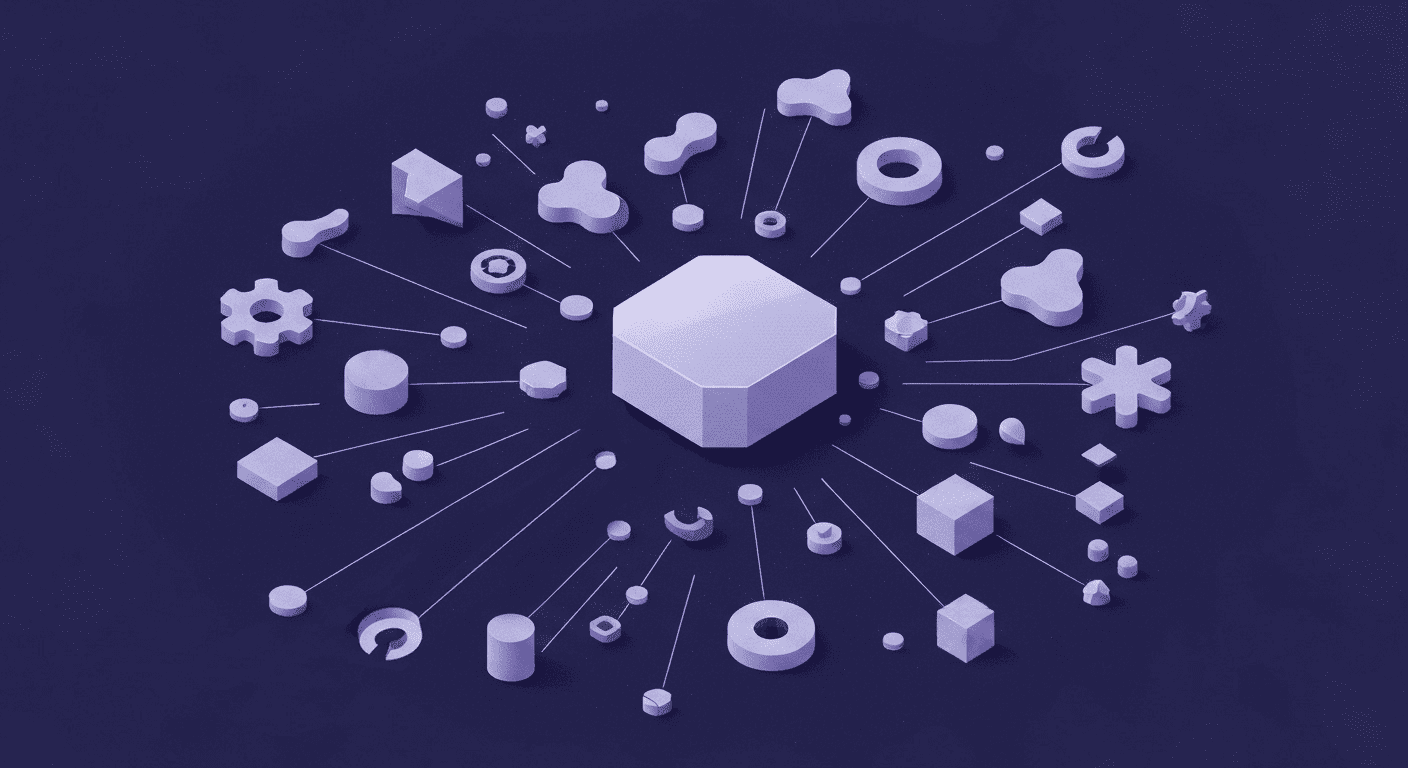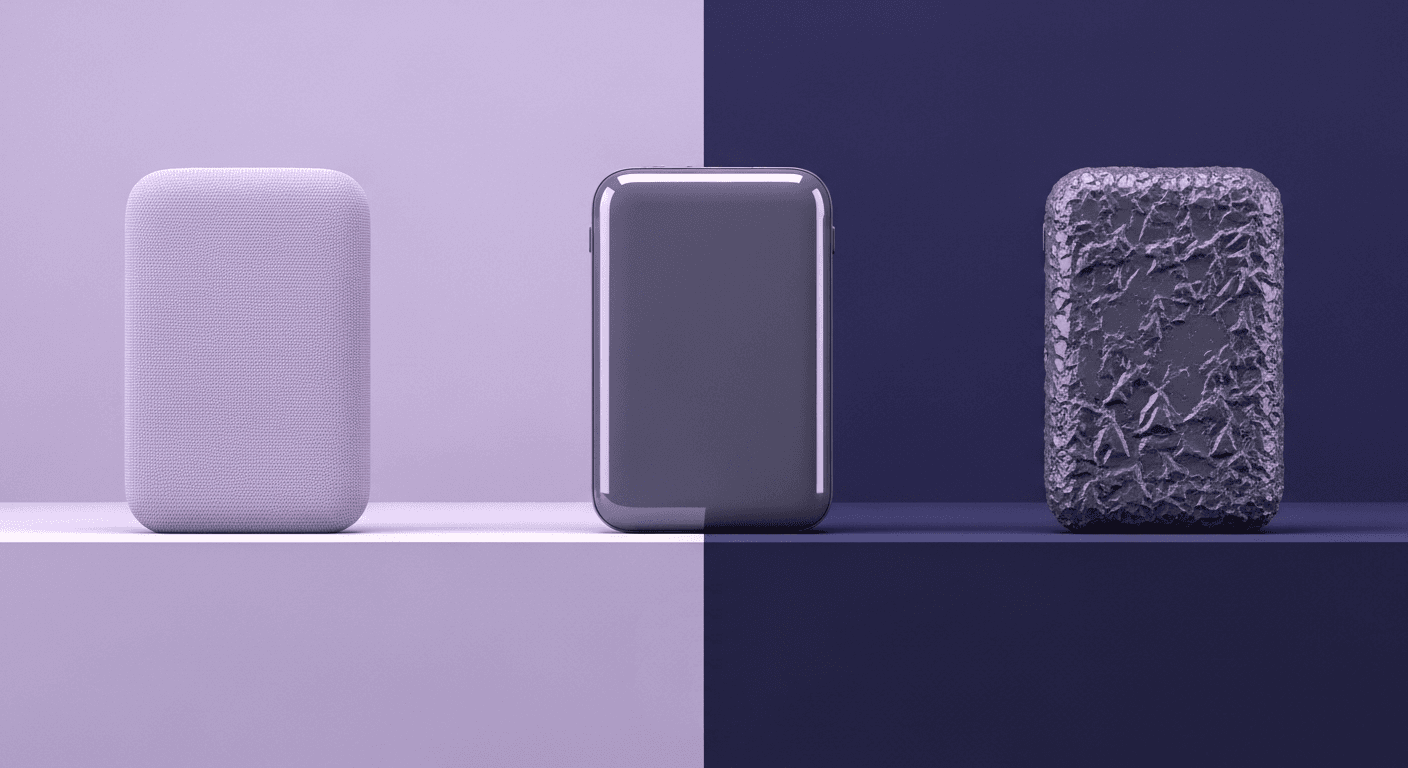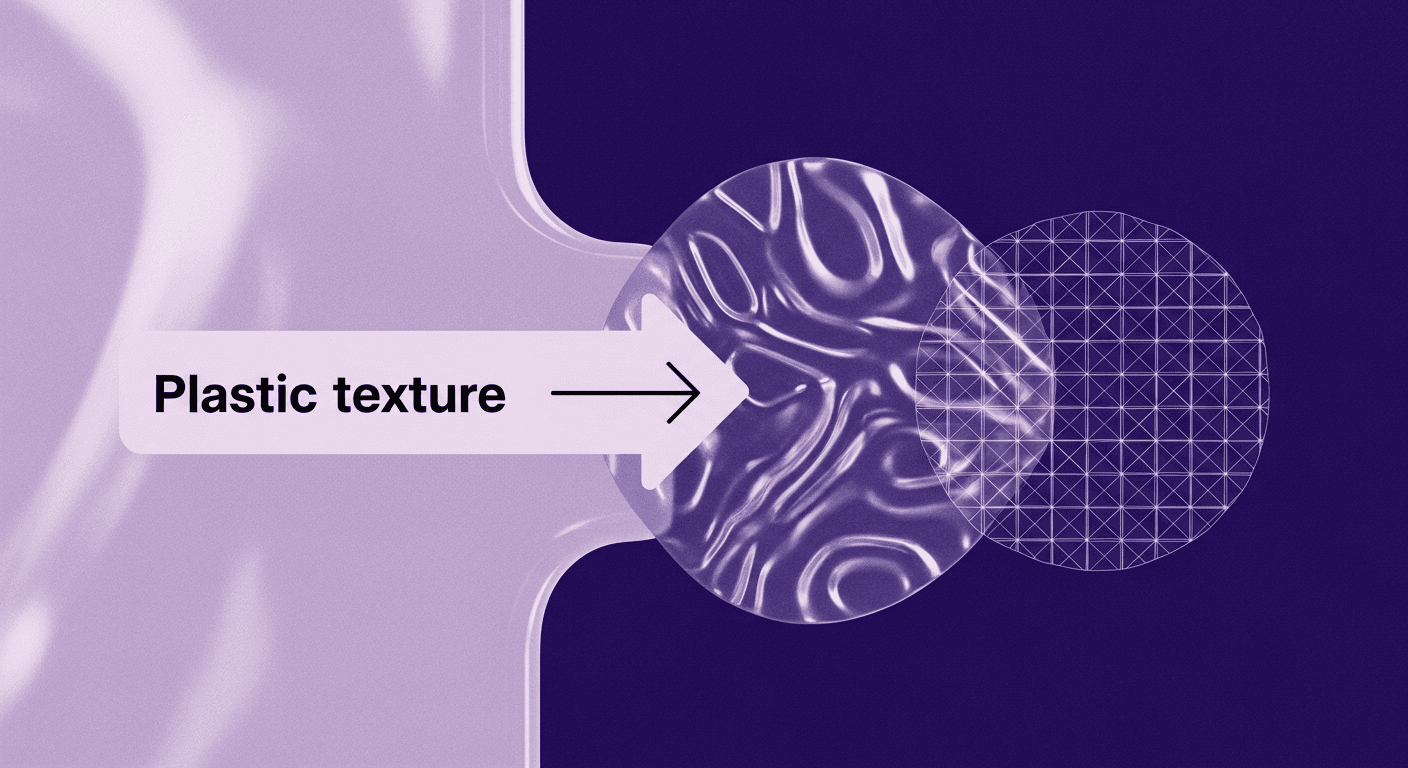Ultimate Guide to Community Resources & Forums for PBR Textures
By Mira Kapoor | 2 July 2025 | 13 mins read
Table of contents
Table of Contents
Every time an artist spends an hour hunting for the right PBR texture, it’s a tiny cut that bleeds your budget and your deadline. This guide isn’t just another list of download links. We’re going to unpack a strategic approach to finding, vetting, and organizing PBR textures from community hubs, turning scattered resources into a powerful, centralized asset for your team. Because building a reliable library isn't about hoarding more files, it's about creating a streamlined workflow that gives your artists back their most valuable resource: time to be creative.

Before the hunt: Why finding the right PBR textures can stall your pipeline
You have the vision, the team, and the deadline. So why is half your art department stuck on a random texture website, downloading yet another questionable brick material? Most teams think their textures are slowing them down. They’re right, just not in the way they think.
The real cost of a bad texture search
The most obvious cost of a bad texture search is time. Every hour an artist spends hunting for the perfect cobblestone is an hour they aren't modeling, lighting, or polishing the assets that actually ship. This isn't just a minor inconvenience; it's a production bottleneck. It’s like sending a master chef to forage for every single ingredient before they can start cooking. The talent is there, but the process is broken.
This inefficiency scales across the team. Five artists spending an hour a day on texture hunts adds up to over 100 lost hours a month. That’s two full weeks of paid work evaporating into an unorganized folder of textures. The real cost isn’t just time; it’s momentum.
The challenge of maintaining quality and consistency across a project
And if the time sink wasn’t enough, the quality takes a hit as well. Pulling assets from a dozen different sources creates a “Frankenstein” effect. One texture is 4K, the next is 1K with visible compression artifacts. Naming conventions are all over the place. The albedo map from one site is perfectly clean, while another has baked-in lighting, A critical misstep in PBR workflows.
This inconsistency forces rework. Your artists have to spend time cleaning up, rescaling, or even recreating maps to fit your project’s standards. It undermines the very reason you sought pre-made textures in the first place: to save time. A cohesive visual style is built on a foundation of consistent, high-quality assets. Without a strategy for sourcing them, you’re building on sand.
So, how do you build a library that accelerates your team instead of slowing it down? It starts with knowing where to look and why.
The core library: Top-tier PBR texture community resources
Think of these resources as your foundational toolkit. They’re reliable, high-quality, and ready to plug into your pipeline. We’ll break them into two categories: curated libraries for speed and active communities for collaboration.
Curated online texture libraries for when you need reliability and quality, fast
When a deadline is looming, you don’t need experimentation; you need a high-quality, concrete material that just works. These platforms are built for that.
- Poly Haven: This is a go-to for many studios, and for good reason. It’s a community-funded resource offering high-quality PBR textures, models, and HDRIs under a CC0 license. The value proposition is freedom. CC0 means you can use the assets for any purpose, commercial or otherwise. You don’t need to triple-check the license before sending it to an outsourcing partner. The quality is consistently high, making it a safe bet for any pipeline.
- Quixel Megascans: Widely regarded as the ultimate in photorealistic asset quality. As part of Epic Games, its massive library is free for use with Unreal Engine, making it an essential resource for UE-based studios. For other engines, it operates on a subscription model. The value proposition is its ecosystem. The integration with tools like Quixel Mixer and Unreal Engine creates a seamless workflow from asset browsing to in-engine implementation. The quality is photogrammetry-grade, setting the bar for realism.
- AmbientCG: Similar to Poly Haven, AmbientCG provides thousands of PBR materials under the CC0 license. It's another excellent source for foundational materials like wood, metal, and fabric, with a strong focus on technical correctness. It's a fantastic, no-fuss library for filling the gaps in your collection.
A quick note on licensing: Always check. Even with “free” sites. A clear license like CC0 is a strategic asset it removes legal friction and lets your team move fast.
Active 3D texture communities & forums for collaboration and unique assets
Sometimes you don’t need another perfect concrete texture. You need inspiration, feedback on a custom material, or a unique asset that isn't on the front page of every library. This is where PBR texture community resources shine.
- ArtStation: This is more than a portfolio site. It’s a living, breathing community of the world’s best artists. The trick is to use it strategically. Follow texture and material artists whose style aligns with your project. Many share free or low-cost materials in their store, and their project breakdowns are invaluable learning resources. You’re not just downloading a texture; you’re tapping into an artist's process.
- Polycount: If ArtStation is the gallery, Polycount is the workshop. It’s one of the best community forums for texture artists, with deeply technical discussions on everything from PBR theory to shader optimization. If your team is wrestling with a specific workflow challenge, chances are someone on Polycount has already solved it. It's a place for learning and problem-solving, not just asset drops.
- Reddit (r/PBR, r/Substance3D, etc.): Subreddits dedicated to 3D art and texturing are fantastic for quick feedback and discovering new tools. They offer a more informal, conversational environment where artists share works-in-progress and troubleshoot issues. A reliable way to stay updated on emerging techniques
Leveraging these 3D texture communities is about more than just downloading freebies. It’s about engaging with the craft, learning from peers, and finding unique solutions that go beyond the standard libraries. Having great sources is half the battle. The other half is knowing when to stop searching and start creating.
Beyond the download: Tools to create and manage your textures
A curated library gets you 80% of the way there. The final 20% the hero assets, the stylized materials, the surfaces that define your world, often need to be built. And once you build or download it, you need a system to prevent it from getting lost.
PBR texture creation tools for custom needs
The decision to create a texture instead of downloading one is a strategic call. Here's a quick guide:
- Download when: You need a generic, high-quality surface (like basic metals, woods, or plastics) and speed is the priority. The goal is photorealism and efficiency.
- Create when: You need a material that is central to your project's artistic vision, highly stylized, or specific to a hero asset. This is where your project's unique visual identity is forged.
When you do need to create, these are the essential tools:
- Texturly: This is an AI-powered texture powerhouse designed to streamline your workflow. It allows you to effortlessly generate unique textures, automatically ensuring they are perfectly tileable. Beyond creation, Texturly intelligently transforms any base map into a full set of Physically Based Rendering (PBR) maps, guaranteeing stunning visuals in any modern rendering engine. This tool provides the freedom and high-quality results studios demand, making your textures immediately usable for any project, commercial or otherwise. With Texturly, you're equipped with a reliable and invaluable asset for any production environment.
- Substance 3D Painter & Designer: This suite is the industry standard for a reason. Designers enable the procedural creation of limitless material variations from scratch, ideal for building your base library. A painter is for applying those materials directly to 3D models with artistic precision. It’s a powerhouse for creating custom, high-quality textures.
- Quixel Mixer: Mixer is a more accessible, artist-friendly tool focused on blending and customizing existing textures. Its strength lies in its tight integration with the Megascans library. You can pull in a dozen different scans rocks, moss, mud, and blend them together intuitively to create a complex new material in minutes. It's the fastest way to go from a base texture to a realistic, custom surface.
Asset managers who organize the chaos
Your server is probably littered with folders named Metal_Rusty_Final_v2_USE_THIS.zip. This digital clutter isn't just messy; it's a drag on productivity. A centralized asset manager is the solution.
Think of an asset manager as a private, internal library for your team. Instead of digging through nested folders, artists can search, filter, and preview assets from a single interface. Here are a few to consider:
- Connecter: A powerful and free visual asset manager. It allows you to create a central, taggable library of all your textures, models, and other files. Its visual interface makes browsing for the right asset incredibly fast.
- Adobe bridge: If your team is already in the Adobe ecosystem, Bridge is a solid, built-in option for organizing and tagging assets.
- Dedicated DAMs (digital asset management systems): For larger studios, tools like iconik or Prism offer robust, pipeline-integrated solutions with features like version control and automated tagging.
The goal is to build a searchable, reliable source of truth. A good asset manager turns a chaotic folder structure into a strategic advantage, saving time and ensuring everyone on the team is using the right assets.
How to choose high-quality PBR textures
Before any new texture gets added to your central library, it needs to pass a quick but critical inspection. This is your quality gate. Run every potential asset through this checklist to ensure it helps your pipeline, not hurts it.
Technical benchmarks every texture must meet
These are the non-negotiables. If a texture fails here, it gets rejected. No exceptions.
- Seamless tiling: Preview the texture on a simple plane. Does it tile perfectly on both the X and Y axes? Any visible seams or repeating patterns will immediately break the illusion. This is the first and most important test.
- Appropriate resolution: Is the texture resolution fit for purpose? More isn't always better; it can be a performance killer. Use a tiered approach: 4K for hero assets viewed up close, 2K for general environment assets, and 1K for smaller props or distant objects. A 4K texture on a tiny screw is a waste of memory.
- Map completeness and correctness: A PBR material is a collection of maps, and each one has a job. Ensure the download includes the right ones for your workflow and that they are technically correct.
- Albedo: Should contain pure color information only. Reject any albedo map with baked-in shadows or ambient occlusion.
- Roughness/Glossiness: This map defines the microsurface. It should be a grayscale image that accurately describes how light scatters across the surface. This is often the most important map for achieving realism.
- Normal: Check that the normal map is in the correct format (DirectX or OpenGL) for your engine to avoid lighting errors. It should add fine detail without looking distorted.
- Metalness: This should be a black-and-white map. White for pure metals, black for non-metals (dielectrics). Grayscale values are typically reserved for transitional states like dirt on metal.
Evaluating for artistic and pipeline fit
Once a texture passes the technical check, ask these strategic questions:
Does this fit our style guide? A photorealistic texture in a stylized world is jarring. It must serve the overall art direction, not fight against it.
Is the license clear for commercial use? If you have to spend 20 minutes reading fine print, the answer is probably no. Stick to resources with crystal-clear licensing like CC0 or explicit commercial terms. Any ambiguity is a risk.
Is the source of this texture authoritative? A texture from a reputable library or a known professional artist is a safer bet than one from a random aggregator site, which may have stolen or repackaged the asset.
Great. You've found quality assets that fit your vision. The final step is integrating them into your team's day-to-day work without causing more chaos.
Plugging it in: Weaving these resources into your team's workflow
Having a great library is one thing. Making it easy for your team to use is another. A defined process is what turns a folder of assets into a functional, efficient pipeline. Let's build a workflow that sticks.
How to share and download PBR textures online as a team
The goal is to eliminate the unstructured approach where every artist downloads their own assets into a personal folder. You need a simple, centralized process for submitting, approving, and storing new materials.
Here’s a three-step workflow that works:
1. Submission: Create a dedicated “For Review” folder in your asset manager or on your server. When an artist finds or creates a promising new texture, they place it here, not in the main project files.
2. Approval: Reviewing submissions is a key part of the process. They run the asset through the quality checklist. This step is your quality gate. It ensures that only high-quality, legally safe, and stylistically appropriate assets enter your main library.
3. Integration: Once approved, the asset is moved to the primary library. It should be renamed according to your team’s naming convention and tagged with relevant keywords (e.g., concrete, damaged, industrial, floor).
This simple process ensures every asset is vetted, preventing pipeline pollution and making the main library a trusted resource.
Tips for creating a unified team library that cuts down on repetitive work
A library is only as good as its organization. The easier it is to find something, the more time your team saves.
- Standardize your naming conventions: This is critical. A consistent naming scheme like Material_Type_Variant_Resolution (e.g., Brick_Worn_Red_2K) makes the library predictable and easy to browse. No more guessing what `Texture_final03.tga` is.
- Embrace metadata and tagging: Use your asset manager’s tagging system religiously. Tag textures with descriptive, searchable keywords. An artist looking for a metal floor for a sci-fi level should be able to filter by metal, floor, and sci-fi to see all relevant options in seconds.
- Hold a brief kick-off: Don't just send an email. Take 30 minutes to walk the team through the new workflow and the library tools. When they understand the “why” to save them time and headaches, they’re more likely to adopt the process.
The ultimate goal is to reduce friction. You want to empower your artists to spend less time searching and more time creating. A well-managed, unified library of PBR texture community resources doesn't just store assets; it accelerates your entire production.
Your library is more than a folder, it’s an engine
The goal was never to just collect more textures. A folder full of random images is a digital junk drawer. A strategic library is a different beast entirely; it’s an engine you build to accelerate your entire art pipeline.
By plugging in the right community resources and wrapping them in a simple, review-and-integrate workflow, you change the daily rhythm of your team. The hunt for the "perfect" texture stops being a bottleneck. Instead, it becomes a quick, confident query to a trusted source. That reclaimed time isn't just a number on a spreadsheet; it’s the extra day your team gets to polish a key environment, the freedom for a lead artist to mentor a junior, and the momentum that gets a project shipped without the last-minute crunch.
You now have the framework to build that engine. The resources are out there, but building a system around them is what makes the difference. It turns a scattered collection of assets into a reliable, powerful source of truth that fuels your team's creativity, not drains it.

Mira Kapoor
Mira leads marketing at Texturly, combining creative intuition with data-savvy strategy. With a background in design and a decade of experience shaping stories for creative tech brands, Mira brings the perfect blend of strategy and soul to every campaign. She believes great marketing isn’t about selling—it’s about sparking curiosity and building community.
Latest Blogs

How 4K Seamless Textures Transform Flat CG Into Tangible Fabric
PBR textures
Fabric textures

Max Calder
Nov 21, 2025

Beyond Color and Gloss: How Plastic Texture Tells Your Product's ...
Product rendering
Texture creation

Max Calder
Nov 19, 2025

Decode Plastic Material Texture: The Team Language That Prevents ...
Product rendering
Texture creation

Mira Kapoor
Nov 17, 2025
